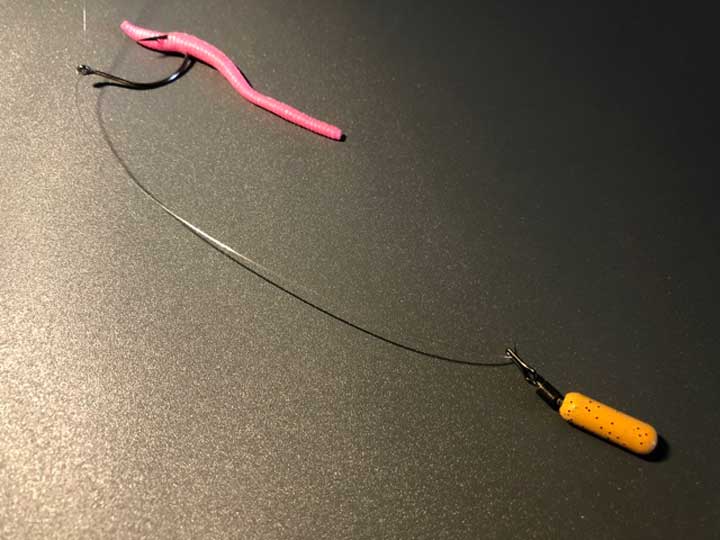Have you ever bought live worms for fishing bait, and found that you can’t use them all? I sure have, and I always felt a little guilty letting the critters go to waste.
That’s why I started buying plastic worms.
I found that the fake worms catch fish just as well as a live nightcrawler, but they last forever in my tackle box. Even better, I can try different colors and sizes of worms to see what the fish are biting each day.
There are several ways to rig plastic worms on the hook, and each has its own advantages. In this article, I’m going to share with you the best ways to fish a plastic worm and catch more fish.
Do You Use a Sinker With Soft Plastics?
This depends on the style of rig you will be using. Drop shots and Carolina rigs rely on a weight, while a wacky rig and Texas rig take advantage of a plastic worm’s weightless, natural action.
See the breakdown of each style below to help you decide whether you want to use a sinker or not. Depending on the body of water you are fishing, you might need heavier weights to keep your bait near the bottom.
Do You Use a Swivel With Soft Plastics?
Swivels are optional for most soft plastic rigs. A barrel swivel is traditionally part of the Carolina rig because it secures the egg-shaped weight in front of the leader. When you can, it’s generally nice to use a swivel to reduce tangles and line twists (braided line also minimizes line twist).
Best Fishing Line for Soft Plastics
I fish with braided lines in almost every situation, but I think it’s especially important when you are using soft plastic worms.
Braid is simply more responsive. Because it has little stretch, you can feel the bites better and set the hook better. It also has a lower chance of breaking off and losing you a fish. If you’re concerned about the fish seeing your line, just tie a leader of the monofilament line on the end of your braid for the best of both worlds.
Note that not all braided lines are created equal: you need to make sure you pick the right brand for the type of fishing you are doing.
What is the Best Way to Rig a Plastic Worm?
My go-to plastic worm rig is the Texas rig because it’s minimalistic; it allows the color, scent, glitter, and vibration to work naturally and attract the fish. The Texas rig is also durable because it pierces the bait in two places, making for a strong connection.
How Do You Hook a Fake Worm Bait?
When tying on a plastic worm, it’s critical that you choose the right type of rig for your amount of cover and whether you want to retrieve, jig, or leave the worm stationary.
I’ll break down my 4 favorite methods below: wacky rig, Texas rig, Carolina rig, and the drop shot.
Each has its application, so I will help you choose and show you how to hook your soft plastic bait.
How to Use a Wacky Rig
This is a very realistic presentation because it lets both ends of the worm dangle freely from the hook. This makes it fall slowly and wiggle like an earthworm under the water.
If you attach a weight, it will fall a little faster and you can bounce it off the bottom. I prefer wacky rigging without weights and letting the soft plastic worm sink naturally. You usually fish the wacky rig by jigging in one spot.
To use a wacky rig, just take any type of hook (use the smallest size to accommodate the worm you are using, I often use a size 6 hook) and hook it through the center of the worm so that the left and right ends hang off the hook.
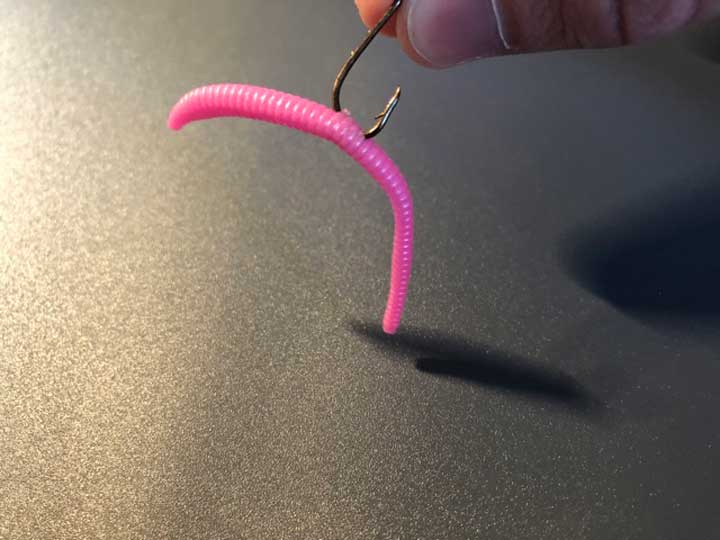
How to Use a Texas Rig
This is a good cast-and-retrieve style for rigging a plastic worm and it does a pretty good job of preventing snags (i.e. it’s weedless).
It gets a lot of action out of the soft plastic to attract the fish’s attention. The Texas rig is especially flashy for a ribbon tail worm. This is a super simple setup that maximizes the plastic worm’s vibration and wiggling motion as you crank it through the water fast or slow.
The Texas rig can be a little tricky, but practice makes perfect. It requires a straight shank hook that’s sized for whatever bait you are using (a small hook size for small finesse worms, a larger hook size for a big bass fishing worm or creature bait) Start by poking the point of the hook straight down into the center of one end of the worm. Run it straight into the worm about ¼ of an inch.
Now turn the hook so the point comes out of the side of the worm. Thread the worm up the shank to the hook eye. Some anglers like to put it all the way over the eye of the hook to protect their knot, but that mostly depends on the hook and line you are using.
Finally, poke the point back through the body of the worm and out the other side so that the worm sits fairly straight and the hook runs through it twice. If you do it right, this rig should be strong enough to withstand most bites without losing the worm.
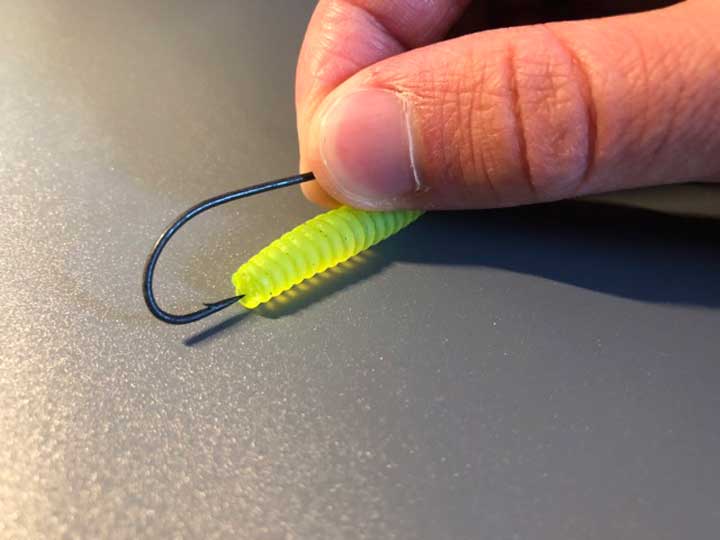
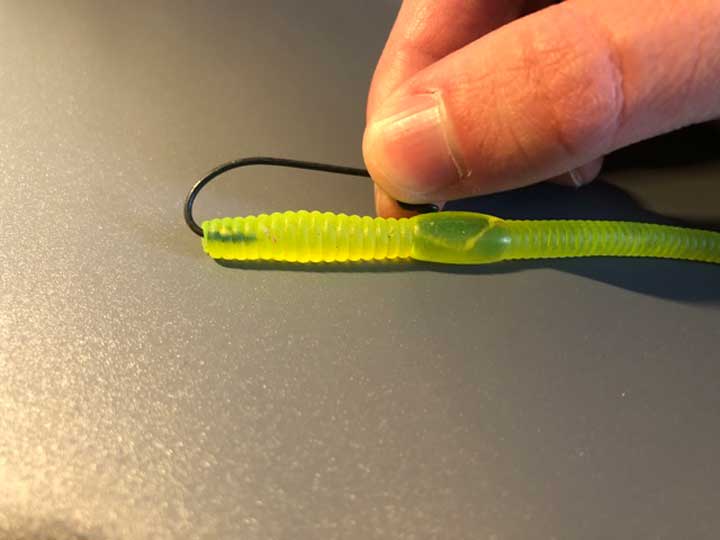
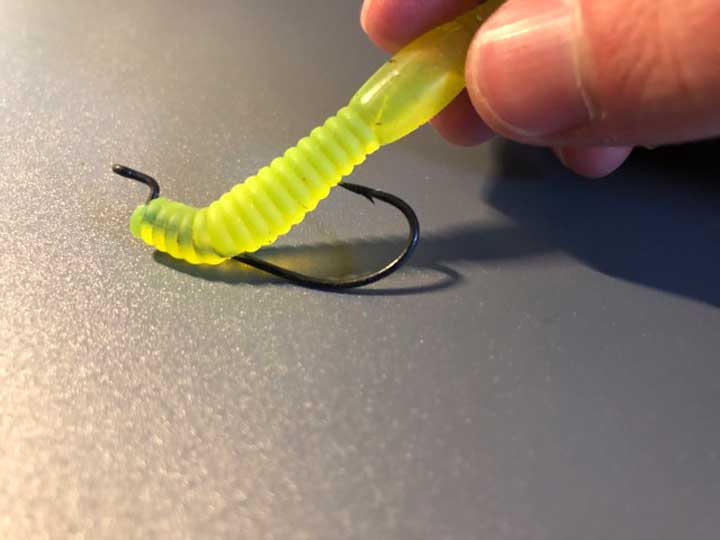
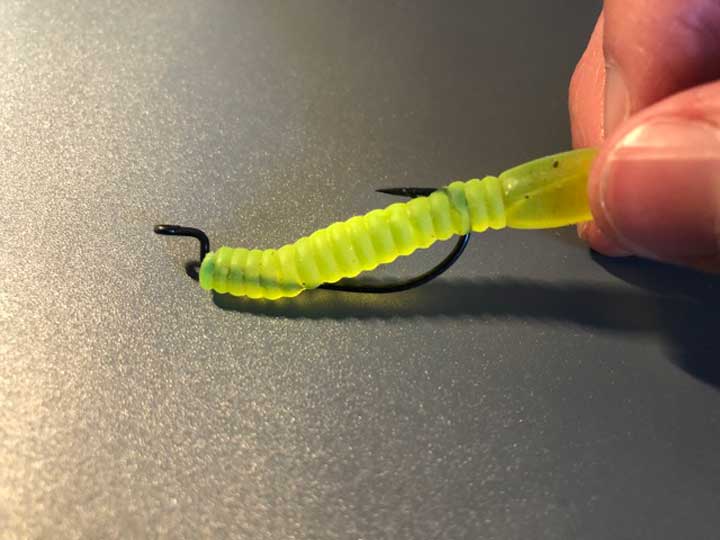
How to Use a Carolina Rig
This is basically a weighted variation of the Texas rig: you can thread the bait on the hook in the same way, but you add a weight to the line.
This approach is fairly weedless but also works well on smooth, exposed bottoms. You should pull the bait along a few feet at a time by swiping your rod tip and then reeling up the slack. This will make the bait pop off of the bottom, dancing in the water before sinking down again.
The motion of a Carolina rig can entice more finicky fish to bite by giving them longer to evaluate the worm before they strike.
Rig your soft plastics Carolina style by threading a barrel weight onto the line (many Carolina fishermen use glass beads, too) and tying it to a barrel swivel. Then tie a 2- to 4-foot leader on the other end of the barrel swivel with a Texas rigged worm tied to the other end of the leader.
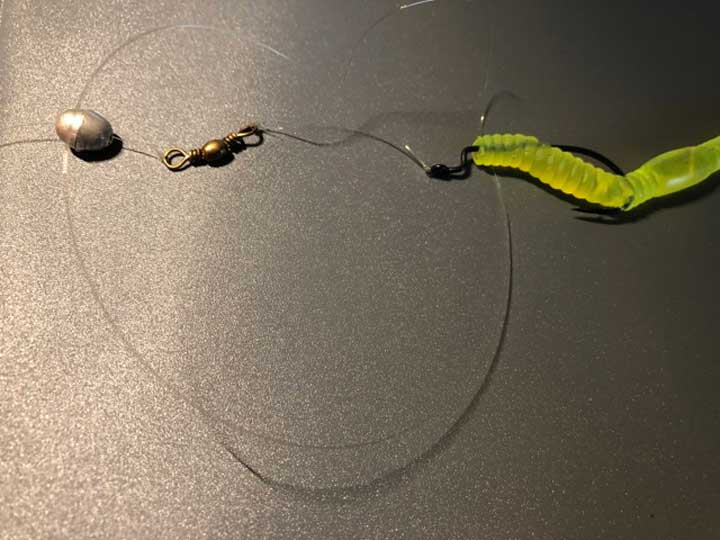
How to Use a Drop Shot Rig
A drop shot rig anchors your line to the lakebed with a weight but suspends the bait several inches above the bottom so that fake worm bait can flash and float around where the fish will see it. The drop shot is a standby for many bass anglers in deeper water.
This rig allows you to fish in one spot that has a lot of cover. It’s not made to cast and retrieve. In fact, most drop shot weights are designed to slip off if they get stuck on a rock or when the fish bites, so they won’t stay on the line if you reel them in repeatedly.
You can wacky rig the worm or hang it on the hook so it floats straight out like a flag.
Tie a drop shot rig by tying an ordinary knot (I always use a Palomar knot) but leaving a long tag end of at least 6 inches. Run that tag end through the eye of the hook one more time and pull it tight so that the hook flies straight out from the line with the point facing upward.
Attach your drop shot weight to the tag end and rig a worm on the hook, and you’re ready to go. Experiment with different lengths of tag end.
Cast the drop shot into cover and let the undercurrent do the work until you feet a bite!
